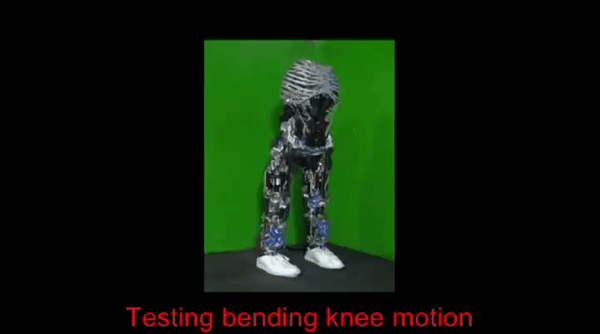[Abstract] In the future, the humanoid robot's body surface may actually cover human tissue.

Eskimo is in our impression that the robots are cold steel, but Pierre-Alexis Mouthuy and Andrew Carr, two biomedical researchers at Oxford University in the UK, want to change everyone’s ideas. Recently, they have issued a somewhat sensational appeal: use real human tissue to make robots.
In an article published recently in the journal Science Robotics, the two argued that they wanted to make truly workable muscle and tendon grafts, and humanoid robots would be a key tool.
At present, tissue engineering requires the use of bioreactors to grow cell sheets. This type of machine looks like a large fish tank filled with nutrient solutions and chemical elements that allow cells to grow on a characteristic grid.
But Mouthuy and Carr point out that bioreactors are still "impossible to simulate a true mechanical environment for cells." That is, cells in human muscles and tendons need to be stretched and moved around the bone to grow. Without this natural pressure, the tissue transplants generated by the researchers usually have a wide range of structural problems, and the number of cells is also very low.
At this time, the robot comes in handy. The two researchers proposed a "humanoid bioreactor system" whose structure, size, and movement are similar to those of the human body. When the robot interacts with its surroundings, the tissues on it will stretch and twist as if it were growing on a human body.
The tissue cultured using this system will be healthy and grow in the same area as the replacement site. Mouthuy and Carr point out that this is especially helpful for skeletal muscle grafts because the joints between tissues often fail to heal.
What does this humanoid bioreactor system look like? It may be based on a humanoid robot that has a "soft robotic tissue" made of electroactive polymer material, and muscles that need to grow can attach to its surface for exercise. In addition, it needs to be covered with a soft, stretchable sensor to monitor the health of the growing tissue.

In fact, the appearance of this bioreactor may be very similar to the Kenshiro robot that Tokyo University demonstrated in 2012. But its body surface will no longer use synthetic materials, but true human tissue. Those who need to replace the tendon of the hand will be able to interact with the robot, and the latter will have the tendon graft used for future replacement.
Looking to the future, Mouthuy and Carr believe that this will open the prelude to the birth of a "biological hybrid humanoid robot" with "cell brakes." In other words, this kind of robot is a bit like Terminator. Its metal exoskeletons are covered with human muscles, tendons and skin. If we want to make a real humanoid robot, we obviously need to use the musculoskeletal system generated by the cell tissue instead of the elastic polymer. After all, this kind of organization is self-repairing and is also very suitable for stretching and contraction.
Source: Ars Technica
1000 Portable Power Station,1000 Portable Power Station Price, 1000 Portable Power Station product
Jiangsu Zhitai New Energy Technology Co.,Ltd , https://www.zttall.com